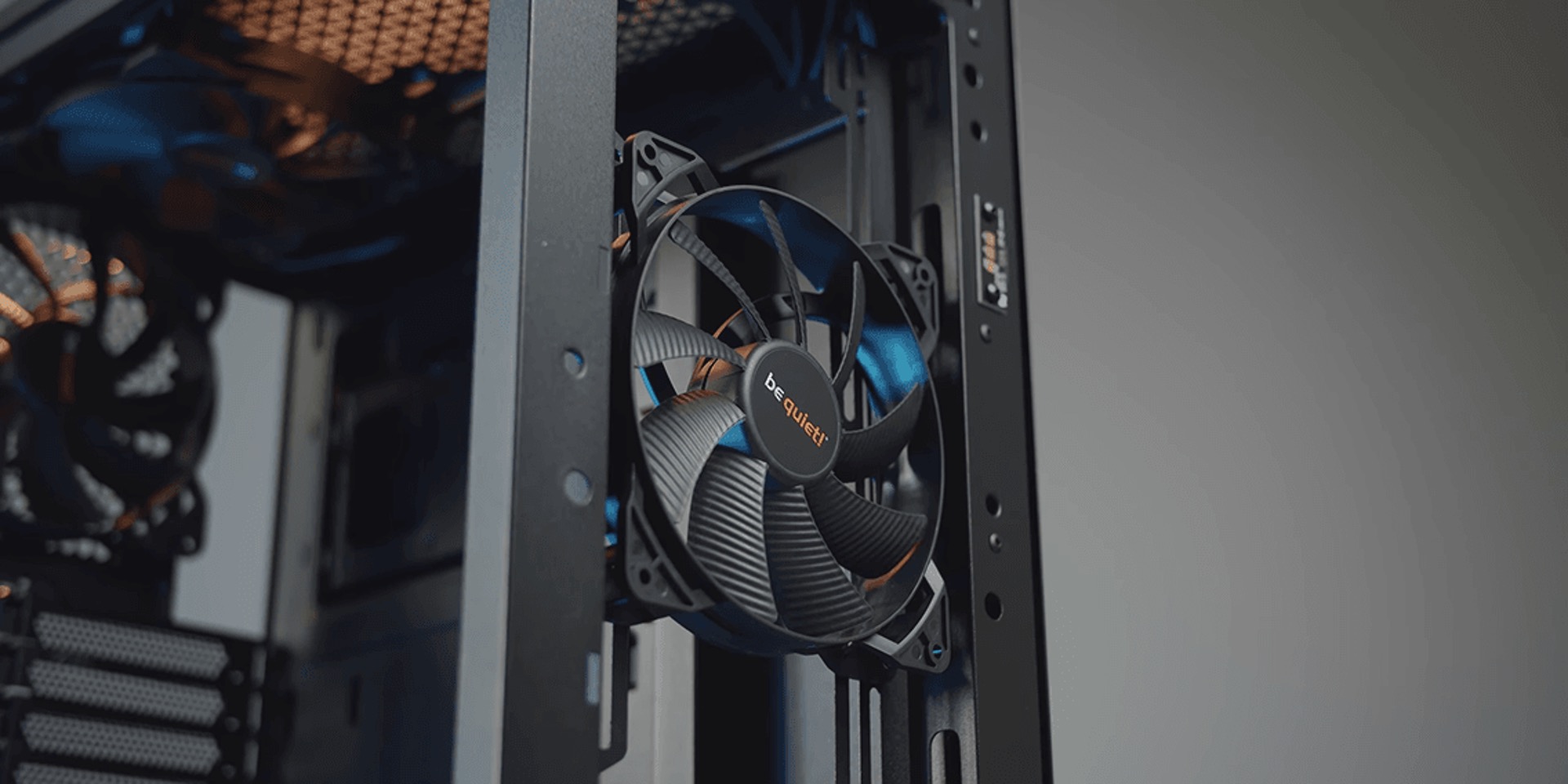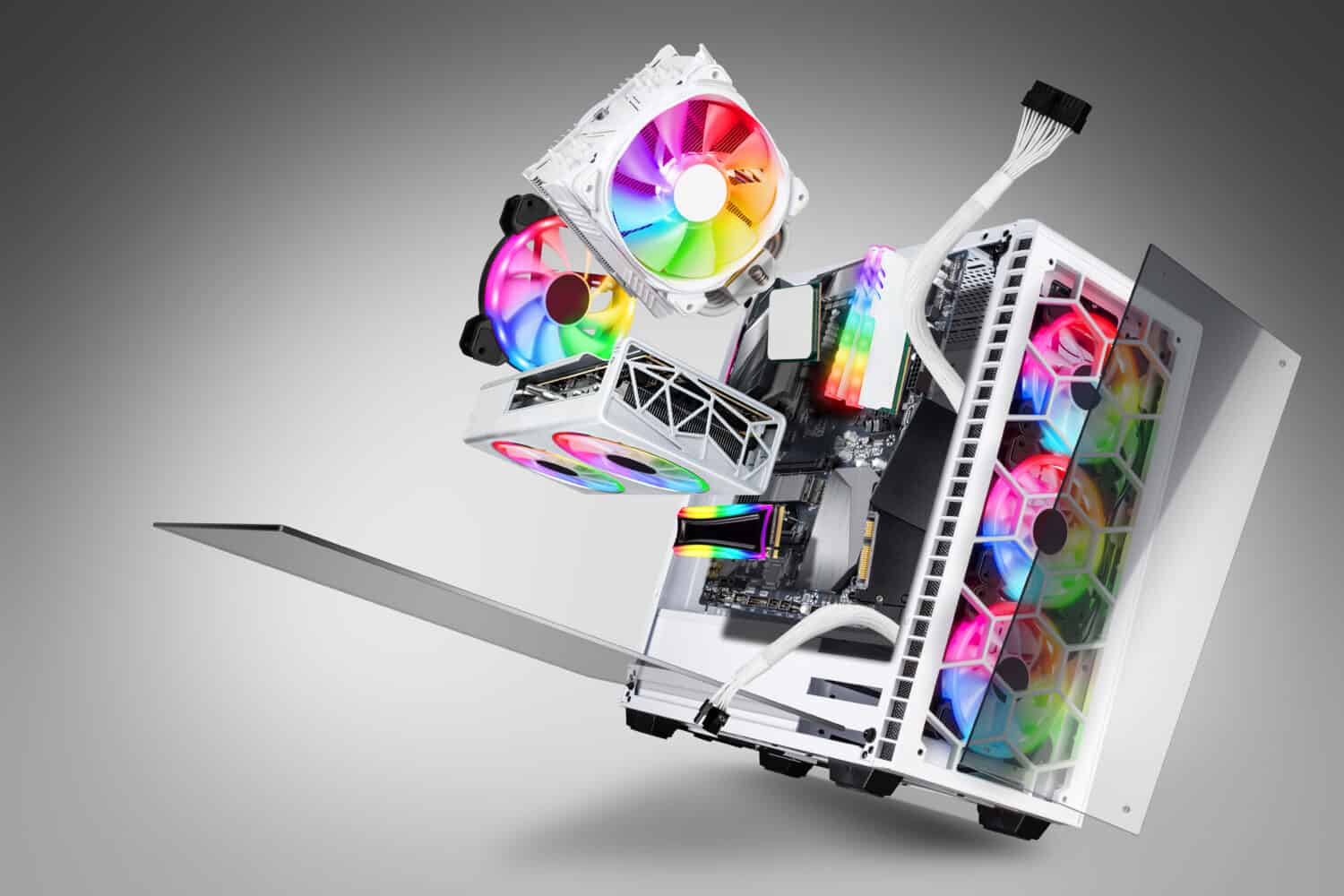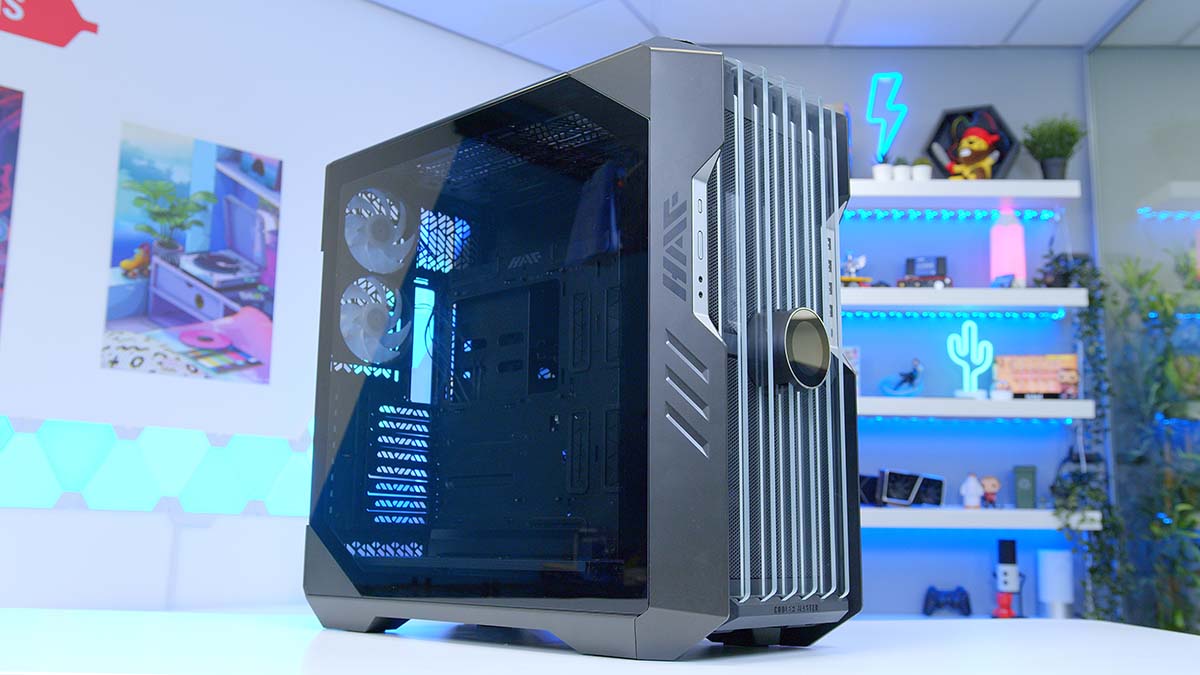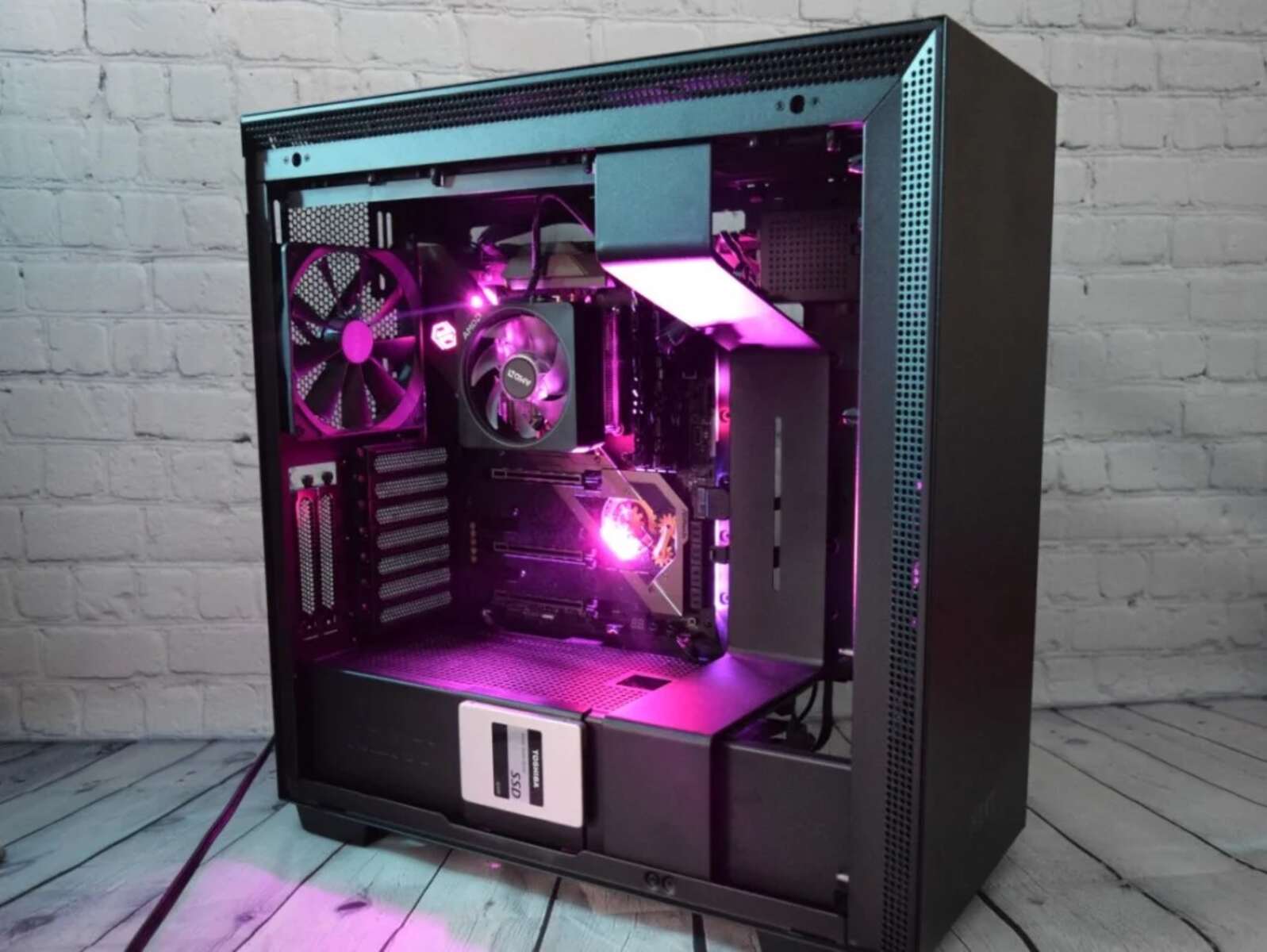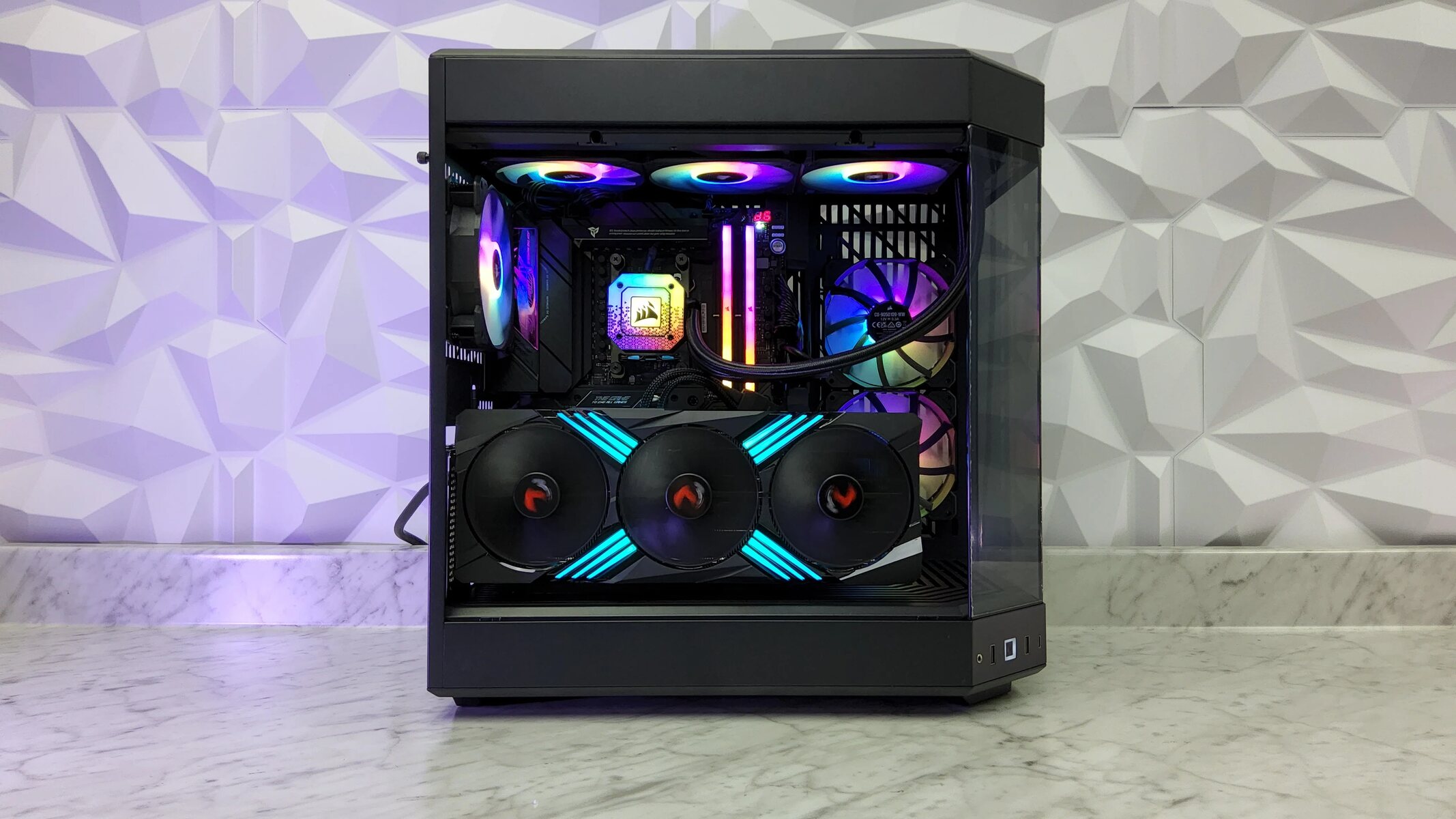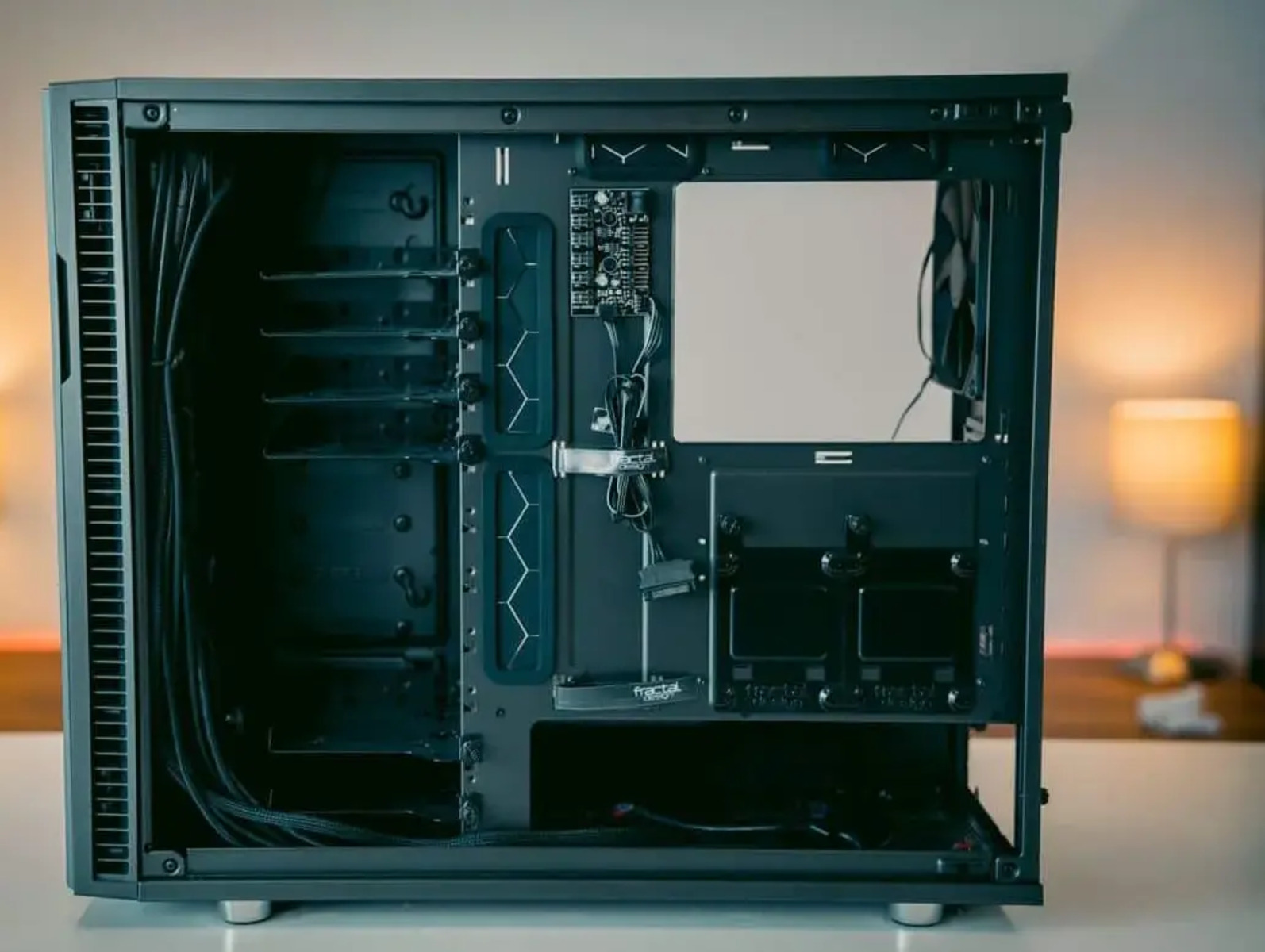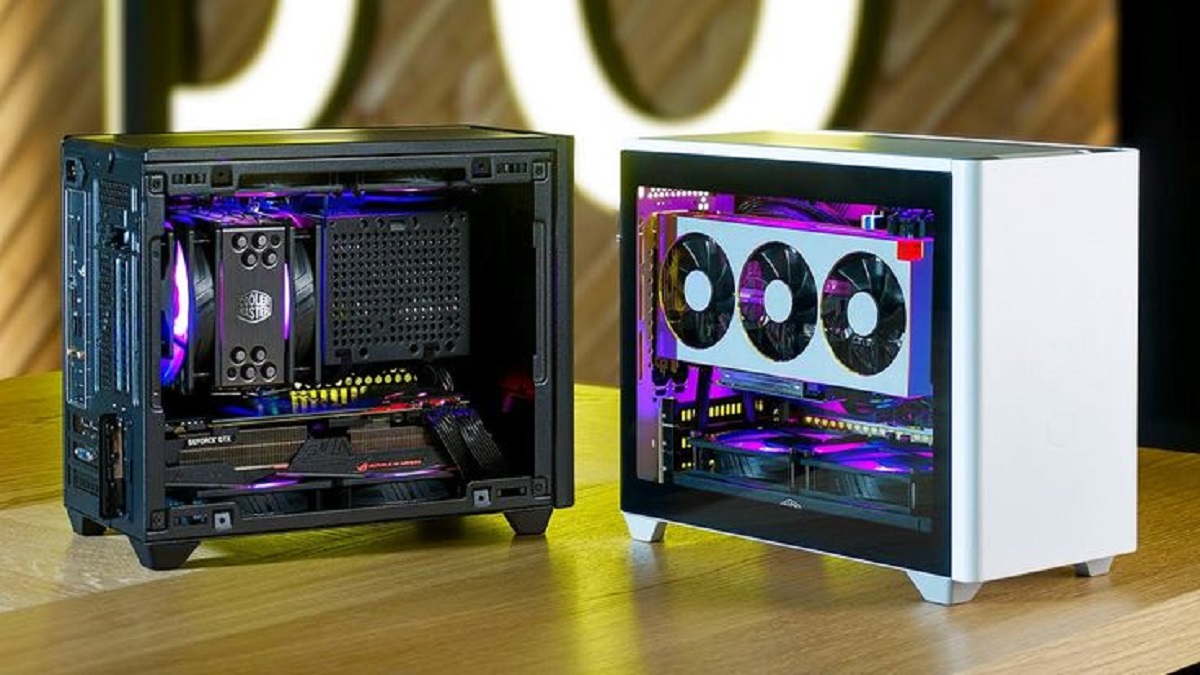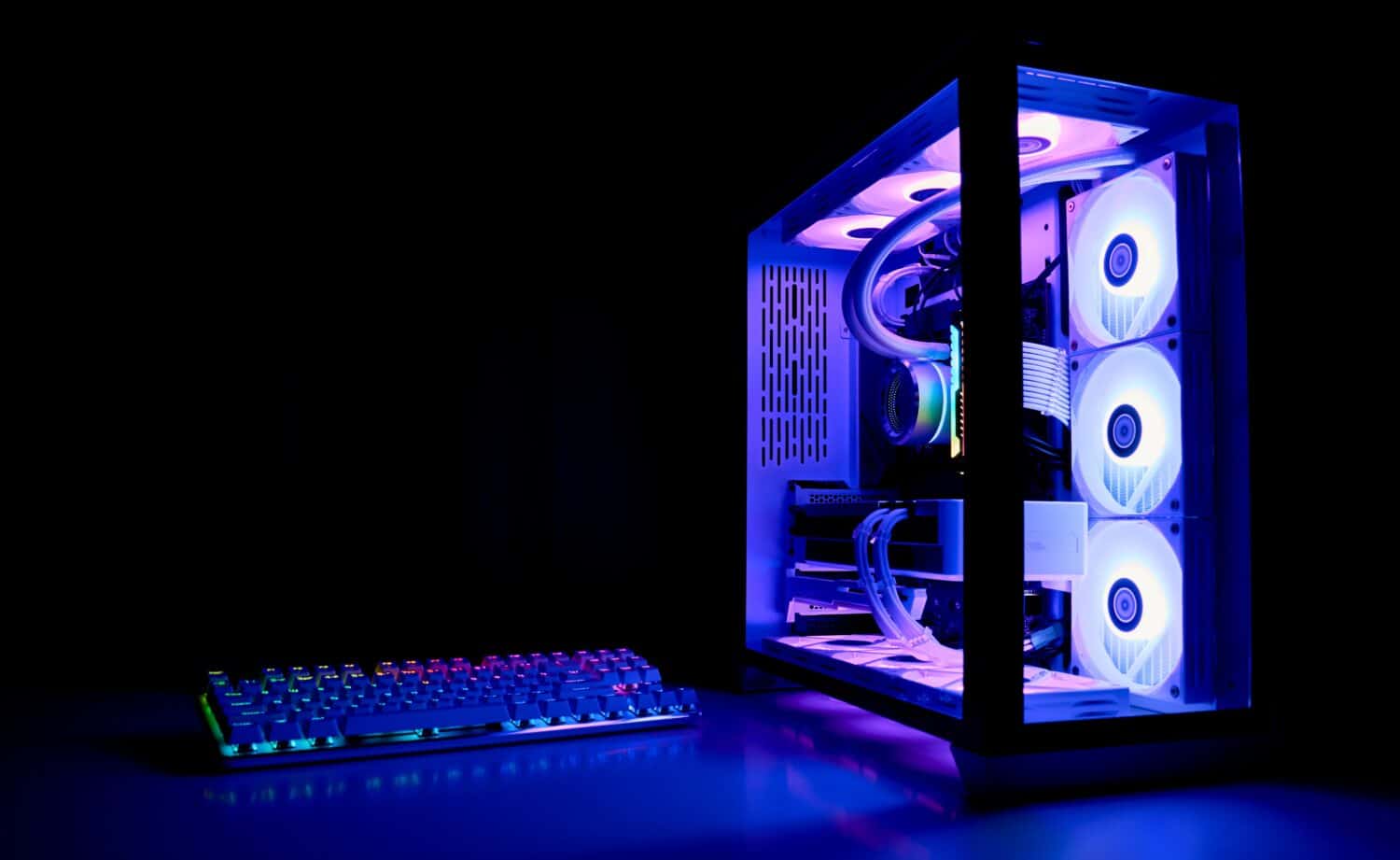Introduction
Welcome to the world of computer cooling! When it comes to keeping your computer running smoothly and efficiently, one component that often gets overlooked is the side case fan. While you may be familiar with the importance of the CPU fan and the exhaust fans, the side case fan plays a crucial role in maintaining optimal airflow and keeping your components cool.
So, what exactly is a side case fan? As the name suggests, it is a cooling fan that is mounted on the side panel of your computer case. Its primary function is to draw in fresh air from the outside and direct it towards the internal components, such as the graphics card, RAM, and hard drives. By improving airflow, the side case fan helps dissipate heat and prevents overheating, which can lead to system instability and component failure.
Nowadays, computer components are becoming more powerful and generating heat at an alarming rate. This makes it crucial to have a robust cooling system in place, and the side case fan is an integral part of it. By providing a dedicated source of fresh air, the side case fan helps maintain lower temperatures, which can prolong the lifespan of your components and ensure optimal performance.
One of the key factors to consider when it comes to side case fans is their size. Side case fans typically come in various sizes commonly referred to by their length or diameter, such as 80mm, 120mm, and 140mm. The size of the fan directly impacts the amount of airflow it can produce and how effectively it can cool your components.
In the following sections, we will explore the importance of a side case fan in detail, discuss the different sizes available, and highlight the benefits of opting for a larger side case fan. Additionally, we will provide some considerations to keep in mind when choosing the size of your side case fan. So, let’s dive in and discover how big the side case fan can make a difference in your computer’s cooling system.
What is a side case fan?
A side case fan is a vital component of a computer’s cooling system, designed to provide additional airflow to cool down the internal components of the computer. It is typically installed on the side panel of the computer case, drawing in fresh air from the outside and directing it towards the internal components.
Side case fans come in different sizes, with the most common ones being 80mm, 120mm, and 140mm in diameter. The size of the fan determines its airflow capacity, which directly impacts how effectively it can cool the components.
The main purpose of a side case fan is to improve and optimize the airflow inside the computer case. As computer components continue to become more powerful and generate more heat, it is essential to have a cooling solution that can effectively dissipate that heat. Without proper cooling, the internal temperature of the computer can rise significantly, potentially leading to thermal throttling, instability, and even permanent damage to the components.
The side case fan works in conjunction with other cooling components in the computer, such as the CPU fan and the exhaust fans. It helps to draw in cold air from the outside, reducing the overall temperature inside the case. The cool air is then directed towards the internal components, which require effective cooling, such as the graphics card, RAM, and hard drives.
By providing a dedicated source of fresh air, the side case fan helps maintain lower temperatures, preventing overheating. This, in turn, ensures the longevity and optimal performance of the computer components. Additionally, a properly cooled computer tends to operate more efficiently, as excessive heat can cause performance degradation.
Installing a side case fan is a relatively straightforward process. Most modern computer cases come with mounting points and screw holes for easy installation. Once mounted, the fan is connected to the computer’s power supply or motherboard using the appropriate cables.
All in all, a side case fan is an essential component for maintaining optimal temperatures and preventing overheating in your computer. Its ability to improve airflow and dissipate heat ensures that your components operate within safe temperature limits, increasing their lifespan and overall performance. In the next section, we will further explore the importance of a side case fan in detail.
Importance of a side case fan
The side case fan plays a crucial role in maintaining the overall temperature and stability of a computer. It is not just an optional accessory but an essential component of the cooling system. Let’s explore the importance of a side case fan in detail:
1. Temperature control: One of the primary functions of a side case fan is to regulate the temperature inside the computer case. As computer components generate heat during operation, a high internal temperature can lead to thermal throttling, reduced performance, and even component failure. The side case fan helps dissipate heat by drawing in cool air and directing it towards critical components, such as the graphics card and CPU, ensuring they operate within safe temperature limits.
2. Prevents overheating: While the CPU fan and exhaust fans are responsible for expelling hot air, the side case fan contributes to an efficient airflow system. It brings in fresh, cool air from outside, reducing the overall temperature inside the case. This prevents the buildup of hot air pockets and ensures a consistent flow of cool air onto the components, preventing overheating of critical parts and enhancing their longevity.
3. Component lifespan: Overheating can significantly impact the lifespan of computer components. High temperatures can cause stress on the sensitive electronic circuits, leading to premature wear and potential failure. By maintaining optimal temperatures, the side case fan helps extend the lifespan of the components, ensuring they operate reliably for a longer duration.
4. Performance optimization: Cooler operating temperatures can directly affect the performance of the computer. Excessive heat can cause the CPU and other components to slow down or throttle their speeds to prevent damage. By keeping the components cool, the side case fan ensures that they can operate at their maximum potential, delivering optimal performance in demanding tasks such as gaming, video editing, and 3D rendering.
5. Noise reduction: An added benefit of a well-ventilated system is reduced noise. When components overheat, the system’s cooling fans often have to work harder, generating additional noise. By preventing overheating, the side case fan helps maintain a quieter environment, allowing you to focus on your work or enjoy a more immersive gaming experience without the distraction of excessive fan noise.
By understanding the importance of a side case fan, you can see how it contributes to the overall health and performance of your computer. In the next section, we will explore the different sizes of side case fans and their impact on cooling efficiency.
Different sizes of side case fans
Side case fans come in various sizes, typically measured by their diameter or length. The most common sizes available in the market are 80mm, 120mm, and 140mm. Each size offers different airflow capacities and cooling capabilities. Let’s take a closer look at the different sizes of side case fans:
1. 80mm: This is the smallest size available for side case fans. Despite its small form factor, an 80mm fan can still provide sufficient airflow to cool down essential components. It is commonly found in compact or mini-ITX cases, where space is limited. While it may not offer the same airflow as larger fans, it can still help improve overall system temperatures, especially when combined with other cooling components.
2. 120mm: The 120mm fan size is the most popular choice among computer enthusiasts and builders. It strikes a balance between airflow capacity and space requirements. A 120mm fan can move a significant amount of air while operating at lower RPMs, resulting in quieter operation. This size is widely compatible and can fit in most computer cases, making it a versatile option for cooling various components.
3. 140mm: For those who prioritize maximum cooling performance and have larger computer cases, the 140mm fan size is a great option. With its larger blades and increased surface area, a 140mm fan can move more air compared to smaller sizes. It is particularly beneficial for cooling high-performance components, such as high-end graphics cards and CPUs, that tend to generate more heat. The larger size also allows the fan to operate at lower RPMs, further reducing noise levels.
It’s worth noting that some computer cases may support other sizes, such as 92mm or 200mm fans. These sizes offer unique advantages, depending on the specific requirements of the system and the available space. However, 80mm, 120mm, and 140mm are the most commonly used sizes and can meet the cooling needs of the majority of computer setups.
When choosing the size of your side case fan, it’s important to consider factors such as available space in the computer case, compatibility with other cooling components, and the specific cooling requirements of your system. It’s also worth considering the balance between airflow, noise levels, and RPMs to ensure optimal cooling performance for your components.
Now that we’ve explored the different sizes of side case fans, let’s delve into the benefits of opting for a larger side case fan in the next section.
Benefits of a larger side case fan
Opting for a larger side case fan, such as a 120mm or 140mm, can provide several benefits when it comes to cooling efficiency and overall system performance. Let’s explore the advantages of using a larger side case fan:
1. Increased airflow: A larger side case fan has more significant blades and a larger surface area, allowing it to move a greater volume of air compared to smaller fans. This increased airflow helps in effectively cooling the internal components of your computer. It ensures that fresh, cool air reaches critical areas, such as the graphics card and CPU, preventing them from overheating and maintaining optimal performance.
2. Lower noise levels: Larger fans generally operate at lower RPMs to generate the same or higher airflow compared to smaller fans. This results in reduced noise levels as the fan blades move through the air at a slower pace. By using a larger side case fan, you can achieve better cooling performance with quieter operation, creating a more pleasant and peaceful computing environment.
3. Improved cooling efficiency: The increased airflow provided by a larger fan helps in more efficiently dissipating heat from the components. By moving a greater volume of air, the larger fan can effectively remove the hot air generated by the components, preventing hot spots and maintaining an even temperature distribution within the computer case. This ensures that the components operate within safe temperature limits, reducing the risk of thermal throttling and improving overall system stability.
4. Compatible with low RPM operation: Larger side case fans, due to their larger size and increased surface area, can effectively generate airflow even at lower RPMs. This characteristic allows for more flexibility in fan speed control and enables the fan to operate at quieter levels while still providing adequate cooling. It’s especially useful for those who value a silent computing experience or engage in activities that require minimal noise disruption, such as audio production or video recording.
5. Future-proofing: Opting for a larger side case fan means you have some headroom for future system upgrades or expansion. As computer components continue to evolve and become more powerful, they tend to generate more heat. Having a larger fan in place ensures that your cooling solution can handle the demand of future components without the need for immediate upgrades or modifications. It provides an added level of future-proofing, saving you time and money in the long run.
Overall, a larger side case fan offers advantages in terms of increased airflow, lower noise levels, improved cooling efficiency, and future-proofing. It provides a reliable and efficient cooling solution for your computer, enabling optimal performance and enhancing the lifespan of your components.
In the next section, we will discuss some considerations to keep in mind when choosing the size of your side case fan for your specific setup.
Considerations when choosing a side case fan size
Choosing the right size for your side case fan requires careful consideration to ensure optimal cooling performance for your specific setup. Here are some key factors to keep in mind:
1. Available space: The first and most obvious consideration is the available space in your computer case. Measure the side panel where the fan will be installed to determine the maximum size that can fit without obstructing other components. Ensure that there is enough clearance between the fan and any nearby components, such as RAM modules or CPU heatsinks, to avoid any compatibility issues.
2. Compatibility with other fans: Take into account the compatibility of the side case fan size with other fans in your system. The goal is to achieve a balanced airflow throughout the case. Consider the number and sizes of other fans, such as the exhaust fans or the CPU cooler fan, and ensure that the side case fan size complements the overall cooling setup. It’s essential to maintain an equilibrium between intake and exhaust to promote efficient air circulation.
3. Cooling requirements: Evaluate the specific cooling requirements of your system. If you are running high-performance components, such as overclocked CPUs or powerful graphics cards, they will generate more heat and require more significant cooling. In such cases, opting for a larger side case fan, such as a 140mm, would be beneficial to provide sufficient airflow and keep temperatures in check. Consider the thermal design power (TDP) of your components to gauge their cooling demands.
4. Noise tolerance: Another factor to consider is your tolerance for fan noise. Larger fans, operating at lower RPMs, tend to produce less noise compared to smaller fans spinning at higher speeds. If a quieter system is a priority, opting for a larger side case fan can help maintain adequate cooling performance while minimizing noise levels. Consider your preferences and the environment in which the computer will be used.
5. Budget: While larger side case fans offer advantages in terms of cooling performance and noise levels, they may come at a higher price point compared to smaller fans. Consider your budget and allocate your resources accordingly. Remember that investing in a high-quality fan with good airflow and low noise levels is a worthwhile investment in the long run, as it ensures better cooling efficiency and can extend the lifespan of your components.
By taking into account these considerations, you can make an informed decision when choosing the size of your side case fan. Remember to evaluate available space, compatibility with other fans, cooling requirements, noise tolerance, and budget. These factors will help you select the optimal size that meets your specific needs and ensures efficient cooling for your computer system.
With a clear understanding of the considerations involved, you are now equipped to make an informed choice when selecting the size of your side case fan. In the final section, we will summarize the key points discussed and emphasize the importance of incorporating a side case fan into your computer cooling setup.
Conclusion
In conclusion,
A side case fan is a crucial component of a computer’s cooling system, responsible for maintaining optimal temperatures and ensuring the longevity and performance of the internal components. By drawing in fresh air and directing it towards critical areas, the side case fan helps dissipate heat and prevents overheating.
When considering a side case fan, it is essential to understand the different sizes available, such as 80mm, 120mm, and 140mm. The size directly affects the airflow capacity and cooling efficiency of the fan. Opting for a larger fan, such as a 120mm or 140mm, provides increased airflow, improved cooling efficiency, lower noise levels, and the ability to handle future upgrades.
When choosing the size of your side case fan, consider factors such as available space in the computer case, compatibility with other fans, specific cooling requirements, noise tolerance, and budget. These considerations will help you make an informed decision to ensure optimal cooling performance for your system.
By incorporating a side case fan into your computer cooling setup, you can significantly enhance the overall temperature control, prevent overheating, extend component lifespan, optimize performance, and create a more pleasant computing experience with reduced noise levels.
Whether you are a casual user, a gaming enthusiast, or a professional, investing in a well-designed and appropriately sized side case fan is crucial to maintaining a cool and stable system. It is an essential measure to protect your investment and ensure smooth and reliable operation of your computer for years to come.
So, don’t overlook the importance of a side case fan. Make an informed choice, select an appropriate size, and incorporate it into your computer cooling system for efficient and effective temperature management. Your components will thank you!







